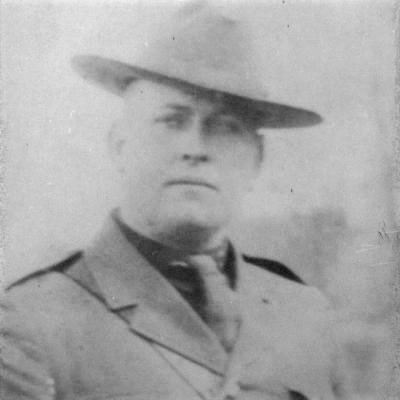Last updated: September 2, 2023
Article
New information reveals the identity of a State Trooper buried at St. Paul’s

New information reveals the identity of a State Trooper buried at St. Paul’s
The cemetery at St. Paul’s is the final resting place of about 8,000 people, stretching from the early 1700s to the present. Through the 1980s -- when St. Paul’s became a unit of the Park Service -- history buffs, parishioners, and genealogists gathered information and stories about those buried here. Over the past 40 years, with the efforts of Park staff using modern research tools, additional material has been accumulated, revealing a rich tableau of American lives in this corner of the republic.
But you can never know it all. New information and perspectives on people buried at the site continue to materialize, and it is not always pleasant. In July 2023 we learned that a man buried here in 1924 -- Theodore Dobbs -- was a New York State Police officer, who died from injuries suffered in the line of duty in Queens County. Trooper Dobbs, who was 24, and had family ties in the St. Paul's vicinity, was on motorcycle patrol when he was struck by a mail truck that had passed a stop sign. Dobbs was also a Mason, which is reflected on his marble gravestone, but there was no indication of his service as a trooper. Retired police officers who honor law enforcement members killed in the line of duty informed our staff of this sobering tale. Their identification serves as an occasion to recall the context of Dobbs’ service and sacrifice. He was one of the first New York State police officers to die in the line of duty.
The inspiration for the establishment of a state police force in New York was an unsolved murder in upper Westchester County in 1913. A construction foreman named Sam Howell was shot several times by men attempting to rob a payroll sack that Howell was about to distribute to his workers who were building an estate in rural Bedford. The men responsible for the murder had recently been released from the project and were aware of the timetable for the payroll distribution. Howell identified the suspects before he died from the gunshot wounds, but, at the time, local law enforcement could not apprehend the suspects.
The woman for whom the estate was being built, Ms. M. Moyca Newell, was outraged at the poor performance of the local police. With the assistance of a friend, Ms. Newell began an aggressive lobbying campaign to create a State Police force that could provide a higher level of law enforcement services in rural areas. Opposition in New York to the founding of a state force came from organized labor, and from political leaders who supported unions, including future governor Alfred Smith. They feared such a police force would be used for union busting and violent attacks against workers who were on strike, a common practice in many parts of the country in the early 20th century.
Overcoming these objections, the state legislature approved the establishment of the New York State Police in 1917, just as the United States entered the First World War. The first superintendent was Dr. George Fletcher Chandler, who coined the phrase “trooper” for the officers, which still holds. He implemented strict training routines and standards, including the unusual step of having troopers carry their weapons exposed on a belt. Dr. Chandler also worked to establish a force independent of political control, which was a frequent concern about law enforcement agencies at the time.
But it was still a small agency in its infancy when Theodore Dobbs joined the force in 1922. Typical of early recruits, he had already served as a policeman, on the city force in White Plains, Westchester County. Born in the Bronx, unmarried, Dobbs lived in Elmsford, Westchester County, not far from St. Paul’s, and previously worked as a railroad clerk. He was described as a popular policeman, “a strapping big fellow who had made numerous friends by his unvarying cheerfulness”. Dobbs was assigned to Troop K., which operated out of White Plains, but also provided support on Long Island through its motorcycle patrol division. Cycle drivers did not wear helmets and the two-wheeled vehicles lacked anything like modern safety standards in the 1920s; traffic accidents on motorcycle patrol are cited several times as the cause of death for law enforcement officers in the period.
But it might not have mattered in Dobbs’ case. According to a news report, on September 29, 1924, he was travelling east at about 50 miles per hour, on Merrick Road, in the southeastern part of Queens. Dobbs was enroute to patrol duty at the Nassau County Fair in Mineola when his cycle collided with a mail truck crossing the road that had failed to yield to a stop sign. The trooper was taken to the nearest hospital, Mary Immaculate in Jamaica, with a broken leg, fractured kneecap, and severe contusions on his head and body. The injuries were not initially presumed to be fatal, and the following day, for reasons unclear, he was removed to Nassau Hospital in Mineola. He developed pneumonia at Nassau and died the following day, October 1. Trooper Dobbs was only the fifth State police officer killed in the line of duty.
He was survived by his father, a married sister, and a brother, who was also a police officer. A military funeral was followed by internment at St. Paul’s, near other members of the Dobbs family.
